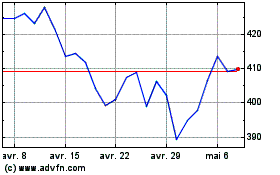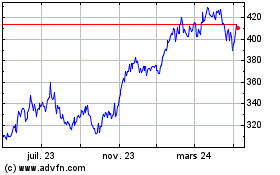By Sarah Krouse
Facebook Inc. is getting deeper into the wireless business.
The social-media giant isn't buying a cellular provider or even
licenses to use federally controlled airwaves. Instead, it has
built networking technology that equipment makers and internet
providers can license free of charge that helps provide home
internet connections through wireless service instead of running
fiber to each home.
The move is part of a growing effort by some tech giants and a
host of small, upstart internet providers to win more customers by
creating home wireless connections at speeds comparable to what
traditional fiber can deliver, at a cheaper price than the big
cable companies charge. These new services often come with fewer
restrictions on data usage than traditional providers.
Combined, these internet providers control just a small slice of
American households but aim to take more as consumers cut the cord
and seek cheaper alternatives to traditional broadband providers.
In some cases, the upstarts will compete with the faster 5G home
broadband service that carriers like Verizon Communications Inc.
are racing to roll out.
The new wave
For the most part, Facebook and the other tech companies looking
to get into the wireless game are still in the early stages of
their efforts.
Microsoft Corp., for instance, has pressed the Federal
Communications Commission to free up more unused television
broadcast airwaves for rural connectivity and created patents and
equipment for using them. Alphabet Inc.'s Google, meanwhile, has
tested laying its own fiber and is trying to commercialize its Loon
project, which delivers connectivity via stratospheric
balloons.
Meanwhile, Facebook's technology, called Terragraph, uses
unlicensed airwaves to transmit signals, which are broadcast by
small radio nodes that can sit on some consumers' homes or street
poles. The providers that use Terragraph can rent existing fiber to
help power their networks, but the fiber only has to be within
about a mile radius.
Together, the fiber, airwaves and nodes create a mesh of
wireless coverage that helps service providers avoid running
physical fiber to every house they want to reach. When one signal
in the mesh network that the nodes create gets blocked, the system
automatically reroutes it to avoid service disruptions.
That mesh network is necessary, because Terragraph -- like other
technologies for providing wireless home internet service -- relies
on ultra-high-frequency airwaves that deliver fast speeds but don't
travel long distances. In addition, these airwaves struggle to
penetrate hard materials and can suffer interference during
inclement weather, challenges that have long made them difficult to
use and that engineers and equipment makers are still working to
overcome.
Facebook says its plans for Terragraph are limited to empowering
internet providers, which brings more people online and translates
into new users for itself. "We're just trying to do that one thing,
which is to get people online," says Dan Rabinovitsj, vice
president of connectivity at Facebook. "We don't want to stand up
and operate networks."
Like many of the small providers in this niche, the companies
that are using Terragraph are largely still experimenting with the
system or deploying it in a small area. Terragraph technology has
been tested in parts of Malaysia, Hungary and San Jose, Calif.
It is currently used by Common Networks, a three-year-old
service provider, in some of its radios to provide in-home 5G
service in markets including Alameda, Calif. The technology is also
set to be deployed in service offered by Agile Networks in a
Canton, Ohio, innovation district next year.
For providers that adopt Terragraph, cost is a big factor.
Common Networks, which targets suburban areas with 500 to 5,000
homes per square mile, uses Terragraph and other radio technology
that enables wireless broadband in suburban areas where it can be
expensive to lay fiber to every home. It charges up to $49 a month
for high-speed service.
Kyle Quillen, chief executive of Agile, says bringing internet
service to a 25- to 30-home development outside Canton would likely
cost $250,000 and take nine months with traditional fiber. The
company plans to do it in three months for 30% of the cost, partly
because of the Terragraph technology, which is "a multiplier of
availability and capacity," he says.
Terragraph is part of a stable of connectivity projects at
Facebook that include helping carriers analyze how their networks
are performing or being used by customers, and Free Basics, which
involves partnering with local carriers to provide limited internet
access. Free Basics, which is available in dozens of countries, has
met political opposition in some corners of the world.
Other competitors
Meanwhile, other service providers are finding their own ways to
sell home wireless service.
Starry Inc., a four-year-old company, uses licensed
ultra-high-frequency spectrum and its own technology -- from chips
and base stations to home Wi-Fi routers -- to provide in-home 200
megabit-per-second broadband service. It charges about $50 a month
and shows the speeds customers get on the screen of a device in
each home and on its customer app, a rare practice among internet
providers.
With more than $300 million in funding from firms such as KKR
& Co. and Tiger Global Management, Starry has so far rolled out
in Boston, Los Angeles, Washington, D.C. and Denver, and plans to
expand into other urban areas.
Amish Jani, founder of venture-capital firm FirstMark Capital
and an investor in Starry, says the fact that consumers often have
little choice in their internet provider made backing an upstart in
the space appealing. Roughly 90 million Americans live in areas
served by only one high-speed broadband provider, according to an
estimate from the Institute for Local Self-Reliance, a nonprofit
organization in Washington, D.C., that advocates for sustainable
community development.
Another provider, Honest Networks Inc., has deployed an internet
service -- using ultra-high-frequency spectrum and other companies'
existing fiber -- in 100 apartment complexes in parts of New York
City and Jersey City, N.J. Honest Networks benefits from a
partnership with real-estate-investment venture fund Fifth Wall
that gives the company a foot in the door with landlords, an
obstacle for new connectivity providers.
Honest says it doesn't share or monetize customer browsing data,
a practice some traditional providers are exploring as a way to win
over privacy-conscious consumers, and it doesn't place data limits
or require contracts.
A spokesman for cable trade group NCTA says there is strong
competition in the U.S. between wired and wireless broadband
providers. "It's great that new entrants are exploring innovative
ways of delivering broadband access to consumers, and we encourage
them to dedicate their resources to reaching consumers in
communities that currently don't have access to broadband
networks," he says.
Ms. Krouse is a Wall Street Journal reporter in New York. She
can be reached at sarah.krouse@wsj.com .
(END) Dow Jones Newswires
October 23, 2019 10:42 ET (14:42 GMT)
Copyright (c) 2019 Dow Jones & Company, Inc.
Microsoft (NASDAQ:MSFT)
Graphique Historique de l'Action
De Mar 2024 à Avr 2024

Microsoft (NASDAQ:MSFT)
Graphique Historique de l'Action
De Avr 2023 à Avr 2024
